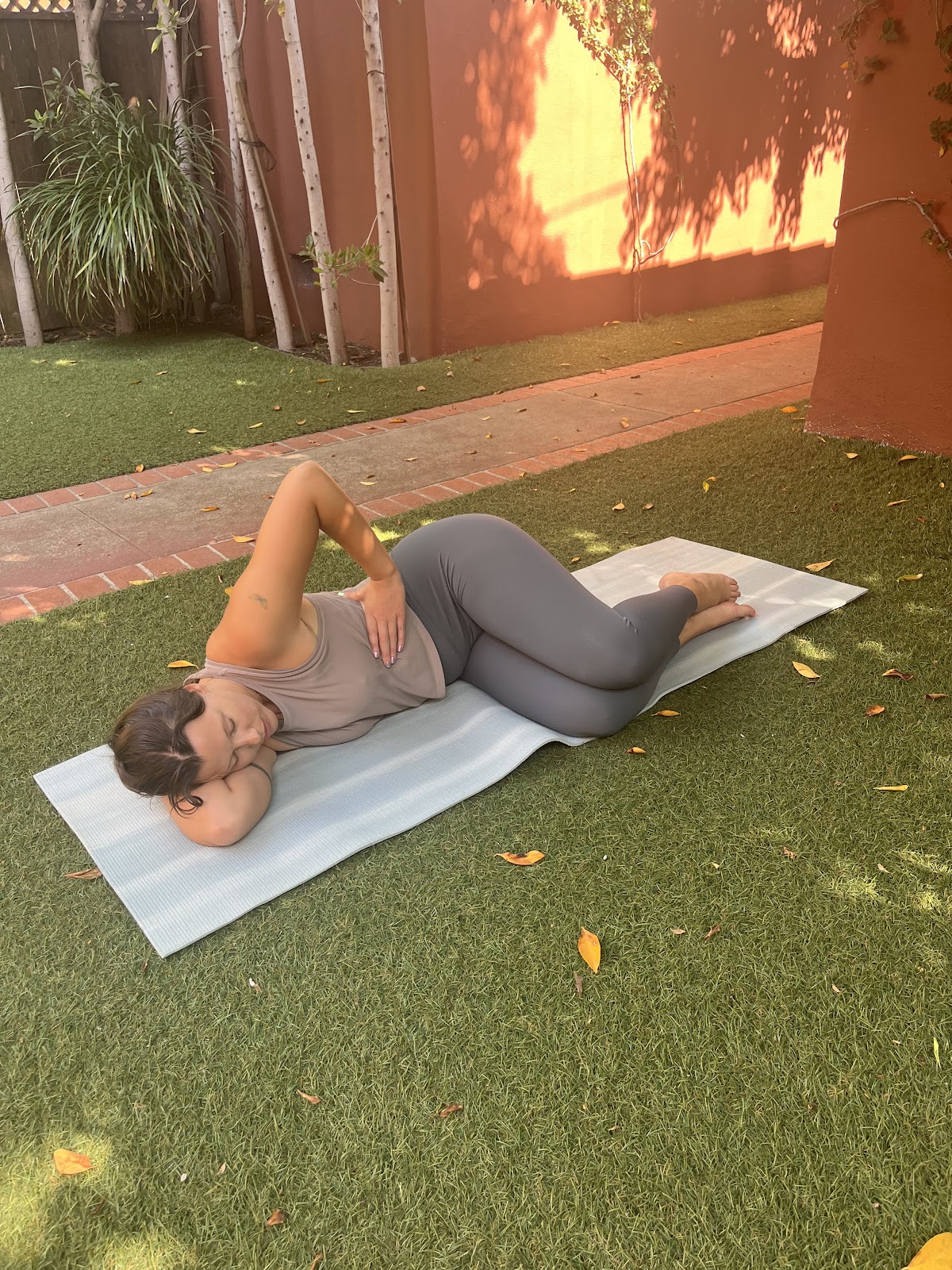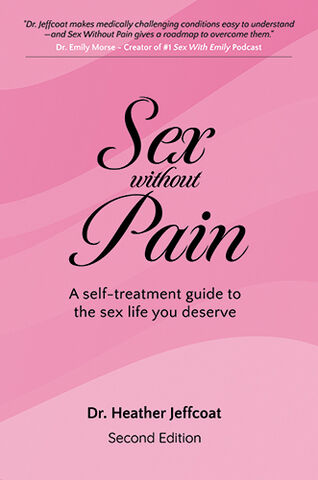
The Femina Physical Therapy Blog
Featuring original articles by our staff about current events and trends
Explore our insightful blog articles on pelvic health, where we delve into essential topics that empower and educate. From understanding pelvic floor disorders to strategies for conquering infertility, our content is designed for those seeking knowledge and support. We discuss the latest research, expert advice, and practical tips to enhance your well-being and foster a deeper connection to your body.
Featured From the Blog:
Running Mechanics and Pelvic Floor Health: The Impact of Footwear

Did You Know That Proper Footwear Can Improve Your Running Mechanics and Pelvic Floor Health?
How Do My Feet Impact My Pelvic Floor When I Run?
If you are a runner, you tend to look for ways to improve your running. If you’re thinking about starting up or returning to running, it can feel intimidating particularly if you have any symptoms related to pelvic floor dysfunction. This only complicates an exercise that, on the surface, seems fairly straight forward. There are some studies that have looked at how your feet can play a part in your pelvic floor muscle function while you run. And if you are looking to return to running postpartum, read on and also check out this article by one of our pelvic floor physical therapists.
Read more: Running Mechanics and Pelvic Floor Health: The Impact of...
Restorative 20 Minute Home Yoga Practice For Chronic Pelvic Pain

Yoga Practice For Chronic Pelvic Pain Can Be a Very Helpful Routine
As stated in my last blog post, yoga can be so beneficial as a pain management tool due to its ability to modulate the sympathetic nervous system3,4 which plays a large role in chronic pain. The exact mechanism of how yoga helps with chronic pain is still being studied, however, it is reasonable to believe the full body relaxation promoted by a yoga practice helps to decrease tension in key muscle groups- including the hips and pelvic floor which are often tight in people with chronic pelvic pain.
Currently, evidence has mostly focused on one hour long practices as an intervention, although there are some studies that report improvements in pain with shorter practices, such as the routine below. As with any mobility/stretching routine, benefits will be seen with more frequent practice, however even twice weekly can help decrease pain.
Read more: Restorative 20 Minute Home Yoga Practice For Chronic...
Treating Bloating and Abdominal Distension: a Multi-Disciplinary Team

Why a Multi-Disciplinary Team is Best for Treating Bloating and Abdominal Distension
Bloating, abdominal distension, loose stools, constipation, abdominal or pelvic pain, fatigue, brain fog, weakness, nutritional deficiencies… these symptoms may be caused by a variety of gastrointestinal or pelvic conditions. If you are experiencing any of these symptoms, this article is a good place to start when deciding who to have on your care team, and what treatments can help!
- Details
- Written by: Debbie Dy, PT, DPT
- 7053 Views

Therapeutic Breast Massage in Lactation Can Help Make Breastfeeding Less Painful
Breastfeeding is widely accepted as the normal standard for providing nutrition to newborns, however, many women who do not reach their breastfeeding goals. US national data stated that breast pain was a commonly reported reason for women weaning less than 1 month postpartum. Within that segment, 29% of women who participated in the study stated that “breastfeeding was too painful” to continue.
In the same study, 24% of women reported “breasts feel(ing) too full or engorged” as another reason to discontinue breastfeeding prior to 1 month postpartum.1 Currently, The American Academy of Pediatrics recommends exclusive breastfeeding of infants for the first six months of life. As physical therapists who treat patients with postpartum conditions, we are well positioned to make a big impact on patients with breastfeeding related pain and reduce barriers to continued breastfeeding!
- Details
- Written by: Kasia Gondek, PT, DPT, CLT, CSCS
- 5102 Views

Yoga for Urinary Incontinence is a Thing
By Kasia Gondek PT, DPT, CSCS, certification in Yoga for Pelvic Pain through the Herman and Wallace Pelvic Rehabilitation Institute
When I am working with fitness or physical therapy clients, I often incorporate mindfulness, breathwork, and yoga postures (asanas) into our sessions together to cue pelvic floor muscle awareness. For thousands of years, yoga has been practiced daily as a discipline for the mind, body, and community to restore balance and overall health. Yoga has been shown to be useful in reducing anxiety, perceived stress, and autonomic nervous system imbalances that are risk factors for urinary incontinence. Yoga postures can improve and maintain general lower extremity and core muscle strength, balance, and conditioning, which has been shown to protect against incontinence in older females.1 An estimated 15 - 40% of females in their 40s to 60s experience some form of urinary incontinence.2
- Details
- Written by: Staff
- 8515 Views

March is Endometriosis Awareness Month.
Today, we explore different exercises someone can do at home to relieve endometriosis pain.
For more information on endometriosis, see our article HERE.
Before we begin exploring gentle movements to relieve endometriosis pain, we will cover how someone may identify the pain they are having could be endometriosis. The unfortunate truth is that endometriosis can only be confirmed through laparoscopic surgery. Most people go years without getting a diagnosis or proper treatment. One study found that the average delay of diagnosis is 8.5 years!1 This is for many reasons, including the lack of awareness of the condition, the many bodily systems it involves that complicates the clinical picture, and the absence of noninvasive diagnostic testing to detect endometriosis. Through this, doctors are able to identify the endometrial-like tissue (tissue that is similar to, but not the same as, the lining of the uterus) that can be found throughout the body.
Read more: 5 Simple Exercises to Reduce and Relieve Endometriosis Pain
- Details
- Written by: Heather Jeffcoat, DPT
- 5734 Views

Exploring the Mind-Body Connection to Painful Sex
Pain during sex isn’t in your head… but it can ‘get into your head’.
The medical community recently had a major a-ha moment about painful sex. It’s something the women who suffer from it have always known – but the results of a recent study about it could be a game-changer for treatment.
Whether you have a clinical diagnosis like vaginismus or dyspareunia, or you just know that sex hurts, painful sex is a common problem - almost half of all women will experience it at some point in life. More than 20% of premenopausal women say sex is painful; the prevalence is higher in women under 30. For some, it’s difficulty during intercourse; for others, it’s significant pain upon penetration. Still, others may not be able to experience penetration at all.
- Details
- Written by: Heather Jeffcoat, DPT
- 4435 Views

Helping Women in Need With Our Community in Mind
The Origin Fund is dedicated to facilitating access to services that address a person’s physical, emotional and medical needs. Our focus is on individuals with pelvic health dysfunctions, and we are dedicated to improving the biopsychosocial aspects of each person as a whole. Through education, outreach and providing access to these services, we can support individuals on their journey to address their pain and dysfunction—linking patients to our network of referrals that provide these services.
Read more: Introducing The Origin Fund - Helping Women in Need
- Details
- Written by: Staff
- 33934 Views

Let's Look at the Effects of Pelvic Floor Muscle Strength on Orgasm
Hint: strong pelvic floor muscles = strong orgasm
The world is learning more and more about the pelvic floor and the many ways that it can be treated. At Femina Physical Therapy, we have spoken about pelvic rehab for urinary, bowel, birth, pregnancy, bladder, erectile issues, and many more. But we all know the question that everyone wants answered: Does pelvic floor strength affect orgasm?
Well reader, you came to the right place.
Read more: The Effects of Pelvic Floor Muscle Strength on Orgasm
- Details
- Written by: Heather Jeffcoat, DPT
- 4586 Views

A recent pilot study looked at how resilience affects patients with urinary chronic pelvic pain (UCPP) conditions and chronic overlapping pain conditions (COPCs). Resilience can be defined as the “capacity to adapt successfully to disturbances that threaten a patient's viability, function or development.” (Southwick et al., 2014) Resilience is now an important aspect in the treatment of pain, as it can increase psychosocial well‐being and the quality of life in patients living with chronic pain. (Casale et al., 2019)
- Details
- Written by: Staff
- 3465 Views

November is Bladder Health awareness month and we would like to discuss with our readers a significant update to the research regarding Interstitial Cystitis / Bladder Pain Syndrome (IC/BPS). In May 2022, the American Urological Association (AUA) released updated clinical guidelines for the diagnosis and treatment of IC/BPS. The purpose of the bladder pain syndrome treatment guideline is to provide a “clinical framework” for best practice regarding the management of patients who experience this. That includes what should and shouldn’t be done for patients, and how to avoid unnecessary or harmful interventions. The previous bladder pain syndrome treatment guidelines were released 8 years ago, in 2014.
What is Interstitial Cystitis / Bladder Pain Syndrome anyways?
Read more: An Update to Interstitial Cystitis / Bladder Pain Syndrome...












